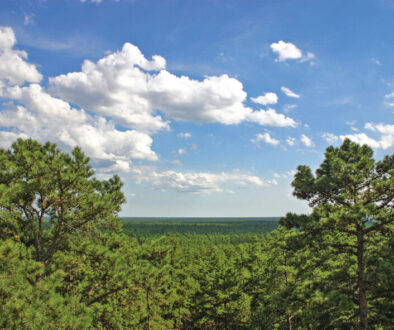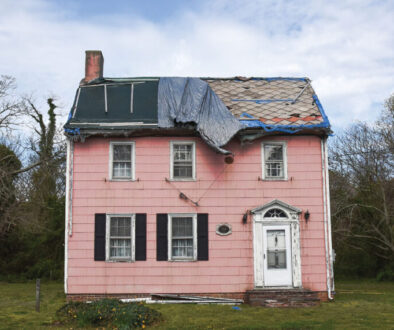Baseball in Old Cape May
America’s favorite pastime revisited

Baseball transitioned from a rural bat-ball game in the 1850s to a sport adopted by the end of the Civil War as the “national pastime.” Popularized by bivouacking soldiers from both armies, the game gestated to a peacetime recreational diversion. After the war the number of new ball clubs and organized leagues grew and transformed the sport.
Even the resort beach town on the lower tip of New Jersey was affected by baseball’s growing popularity. For Cape [May] Island, the game was more than an athletic pastime; it was also an economic opportunity to attract and entertain visitors at the beach resort. This post-war town boasted 22 hotels and several communities of beach cottages. During the area’s peak summer months, the population could grow from a couple of thousand residents to 15,000 visitors. To entertain these seasonal vacationers and promote the Cape’s recovery from the debilitating economic effects of the war, local businessmen believed sports, such as baseball, could attract people to south Jersey.
Initially, Cape May youths played a bat-ball game known as “corners,” and, following Philadelphia’s lead, organized cricket matches. But the growing sports fascination was baseball. Ocean Wave newspaper editor Sam Magonagle wrote that the local youth, “had baseball on their brain pretty bad.” This attraction compelled hotel and other business leaders to give their attention to this new sporting phenomenon. In September 1865, teams from Philadelphia and Camden were invited to the Cape. The players were put up at the Congress and Columbia Hotels. The playing field was the spacious oceanfront lawn of the Congress Hotel along Beach Drive. The ball games that followed were generally pick-up and informally arranged contests among vacationing college students and local players employed by the hotels.
Some of these participants were possibly Negro youths who worked at the local resorts. Their interest in baseball may have been sparked by the visiting players from the post-war black Pythian ball club of Philadelphia. A number of Pythian players, including their captain, Octavius Catto, vacationed at the Cape and stayed at a Negro boarding residence, the Banneker House, near the corner of Lafayette and St. John Streets. Often, prominent Pythians came to Cape May during the “bathing season,” and played ball on the neighboring field above the Gas Works on St. John Street. This playing surface was part of the Wales Estate. [Editor’s note: this area is still a “playing field”—now basketball courts.]

The only other acknowledged early Cape ballfields were the front lawns of Congress Hall and the Stockton Hotel off Columbia Avenue, between Gurney and Howard Streets. The Cape also had playing grounds on the oval racetracks that were built to attract summer sportsmen to the beach community. The earliest track, in 1866, was located between Town Bank and Cox Hall Creek in West Cape May near the old original Diamond Beach [now Sunset Beach]. By 1869, neither the races nor the ball games made the track solvent. This failure did not deter another group of investors, who set up the Cape May Driving Company in the mid-1880s. A new oval track was constructed for the purpose of racing and bat-ball sports. The track was bounded by Columbia and Fourth Avenue and Sunset Boulevard in West Cape May. A half mile outside of the city limits, the new driving park never fulfilled its attendance expectations, and it closed in 1889. Despite this shortfall, the Cape became a stopover for visiting ball clubs seeking to schedule pick-up games.
The most noteworthy baseball occurrences were spring training venues from the National League Philadelphia Phillies. Hoping for pleasant weather and nearby training facilities, the Phillies came to Cape May in 1888, 1891, and 1898. In 1888 the Phillies stayed at the Chalfonte Hotel and conducted their outdoor practices and games at the new Cape May Athletic Park behind the Chalfonte between Sewell and Benton Streets. Two years later, the Phillies returned to the Cape. This time they stayed at the Aldine Hotel on Decatur Street below Washington. This time the ball club practiced beside the Cape May Gas Lot that was part of the Wales Estate above the Lafayette and St. John Streets intersection. When the team returned to Cape May in 1898, in the midst of the Spanish American War, they again stayed at the Aldine and reclaimed their old grounds behind the Chalfonte Hotel. Even Princeton University’s ball teams took their spring practices at the Cape.

During the seasonal summer months Cape May’s baseball thirst was whetted by locally organized ball clubs. It wasn’t until 1888 that the Cape had a regularly scheduled nine. Previously the county depended on visiting subsidized college students and players drawn from summer employment jobs. The “Capes,” or the “Collegians” as the team was known, played a two-month season averaging about four games a week. They played clubs from Riverton, Wynnewood, Ocean City and Atlantic City. Games against the latter often earned the victor the title of “seashore champion.” By the 1890s the Capes’ schedule expanded to include teams from neighboring states—Staten Island, New York; Chester, Pennsylvania; Bristol, Pennsylvania, and Nicetown in Philadelphia. It was said that any team that beat the Capes “will have to play for it and play hard.” On one occasion, President Benjamin Harrison and some members from his cabinet took in a few innings of a Capes game.
Cape May teams also attracted a wide variety of ball clubs. In the early 1890s the semi-pro colored Cuban Giants of New York was a frequent opponent, and in 1915 a Hawaiian team calling themselves the University of China competed against a Cape May ball club. Responding to the economic strains of the great depression, the Hilldale baseball club from Darby, Pennsylvania, a former Negro League champion, scheduled a game in Cape May in August 1930. The Capes failed to get a hit, but they drew a nice size crowd.

The town’s greatest obstacle was finding and sustaining a suitable playing site. A public nine-hole golf course, and later an elementary school, took over land on the Wales Estate, west of Lafayette Street. In the meantime, a housing development displaced the Cape May Athletic Park below Sewell Street. The new replacement ball field, Columbia Park, was above Columbia Avenue, bordering on Madison, the present-day site of the water tower. In 1921 the City Commissioners wanted to improve Columbia Ball Park and inquired whether Connie Mack had any interest in administering the ball field. Mack politely declined the offer, saying he did not have enough players or resources to take on such a commitment. As expected, the facilities were taken over by the semi-pro Capes. They played three games a week at Columbia Park. It would remain their home field until the early 1930s.
One of the most widely covered games played by the Capes was a contest against the Newton Coal Company, a Philadelphia Negro ball club. The Capes defeated them 2 to 1. The game was well attended and profitable. A scheduled rematch had a similar result, 6 to 4 in favor of the Cape May. This game was followed by a contest against the collegian Racquet Club of Philadelphia. The fans, however, were more worked up by a pending ball game against a team from Wildwood.

Less organized and equipped were the Negro ball clubs. They, too, had no league affiliation or a regular schedule of games. The town’s most prominent Negro team was the Cape May Giants, managed by James Washington. They played many of their games near the Lafayette Street Gas Works. Neighboring Woodbine, for a while, had a thriving Colored Athletic Association. But even the formation of a Negro Baseball League in 1916 could not attract a competitive Cape May ball club. Nevertheless, other south Jersey towns—Atlantic City, Wildwood, Ocean City, Pleasantville, Vineland and Millville—were affiliated with the League during its inaugural seasons. Cape May did not have an ample pool of players or assets to compete with the larger beach towns.
After 1930, Cape May baseball teams shifted to a new playing site at Grant Street and Beach Drive. This property fronted the old “colored beach,” as it was known then, on the present site of the Oceanview Restaurant. It was called the Sea View or Ocean View grounds. In the late 1920s Cape May became affiliated with a six-team south Jersey baseball league. Regrettably, Cape May was compelled to drop out of that financially fragile organization. The Cape Collegians, afterwards, resumed playing an independent schedule. For the next few decades this ball field, fronted by the ocean, was used by Negro ball clubs, visiting college athletes and later high school baseball teams. During World War II, the U.S. Navy assembled a ball club who played a regular pick-up-game schedule against local Cape teams.
Today, ball playing is kept alive locally just a little bit up the road, on Middle Township High School ball fields.


